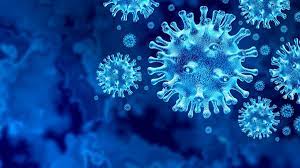Masks, social distancing, proper hygiene and ventilation can help reduce the transmission of COVID-19 in public places, but indeed with these measures, scientists have detected airborne SARS-CoV-2 in inner settings. Now, experimenters reporting in ACS’Environmental Science & Technology Letters have developed a unresistant air sample clip that can help assess particular exposure to SARS-CoV-2, which could be especially helpful for workers in high- threat settings, similar as caffs or health care installations.
COVID-19 is primarily transmitted through the inhalation of contagion-laden aerosols and respiratory driblets that infected individualities expel by coughing, sneezing, speaking or breathing. Experimenters have used active air slice bias to descry airborne SARS-CoV-2 in inner settings; still, these observers are generally large, precious,non-portable and bear electricity. To more understand particular exposures to the contagion, Krystal Pollitt and associates wanted to develop a small, featherlight, affordable and wearable device that does not bear a power source.
The experimenters developed a wearable unresistant air sample, known as the Fresh Air Clip, that continually adsorbs contagion-laden aerosols on a polydimethylsiloxane (PDMS) face. The platoon tested the air sample in a rotating barrel in which they generated aerosols containing a surrogate contagion, a bacteriophage with analogous parcels to SARS-CoV-2. They detected contagion on the PDMS sample using the polymerase chain response (PCR), showing that the device could be used to reliably estimate airborne contagion attention.
Also, the experimenters distributed Fresh Air Clips to 62 levies, who wore the observers for five days. PCR analysis of the clips detected SARS-CoV-2 RNA in five of the clips Four were worn by eatery waiters and one by a homeless sanctum staff person. The loftiest viral loads ( further than 100 RNA clones per clip) were detected in two colophons from eatery waiters. Although the Fresh Air Clip has not yet been capitalized, these results indicate that it could serve as a semiquantitative webbing tool for assessing particular exposure to SARS-CoV-2, as well as help identify high- threat areas for inner exposure, the experimenters say.

